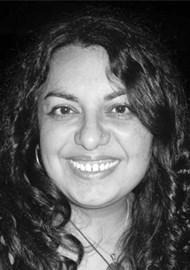Are you an otologist with an interest in implant surgery? Is your unit on the registry? If not, you’d better have a good excuse after reading this…
What is the National BCHI Registry?
The National Bone Conducting Hearing Implant (BCHI) Registry is a national registry which collects information on BCHI fitting and outcomes in children and adults. It has been set up through collaboration with interested professionals from multiple disciplines (including audiologists, ENT consultants, researchers and educators) in different organisations and centres around the UK, and provides information relevant to (potential) users, funders and professionals.
It collects data including numbers of BCHIs implanted, hearing loss (unilateral / bilateral), ages, indications for fitting, and usage rates. The National BCHI Registry is hosted by The Ear Foundation, as an independent body.
How was the registry set up?
During 2011-2012, a number of meetings were held, facilitated by The Ear Foundation, and supported by Cochlear Europe and Oticon Medical. Leaders of major centres in the UK contributed; the aim was to make the data entry and collection short enough to ensure compliance, but broad enough to collect useful data. Informed by these meetings, the first version was created of the registry, and this has undergone several iterations since.
“Professionals from centres are invited to a biannual meeting, which is held with professionals from the different centres, manufacturer representatives and The Ear Foundation BCHI Registry team.”
There were two major issues raised in the initial meetings: that of ethical procedures and that of IT management in NHS centres, and security and anonymity of the data. Clear advice was given by our local ethics committee chair at the time, and guidance issued to ensure that only group data is sent, that no patient data is identifiable, and that data entry is robust and secure. Guidelines were produced and updated to document and ensure awareness of this amongst the professionals involved, and to provide guidance to the registry procedures.
Why do we need a registry?
Currently there is little robust information about the number of BCHI users in the UK to enable planning of services and ensure effectiveness and efficiency. In addition, funding for these devices varies greatly across the country. This BCHI Registry can provide the relevant information needed to drive policy and practice and the support of BCHI users. This information is vital to provide evidence which can be used for clinical cost-effectiveness and to secure the future funding of bone conducting hearing implants around the country. Following discussions with leaders in the field, the National BCHI Registry was developed in order to quantify the number of BCHI users in the country and to gain an understanding of the reasons why people are fitted with the devices, the demographics of the group, and their use of the BCHI(s). This registry provides information for patients, professionals and commissioners of health care services.
What are the aims of the registry?
The aims of the National BCHI Registry are:
- To collect data on the current uptake of BCHIs in the UK from as many centres as possible.
- To collect data on those fitted with BCHIs, and update the collected data on a regular basis.
- To produce the data collected on a quarterly basis in both group and centre format and disseminate this as widely as possible.
Continuing this work is vital:
- To increase awareness on the use of bone conducting hearing implants. It aims to facilitate accessibility to BCHI users’ information, keeping a record of the numbers of implanted users, their demographics and their use of the BCHIs, and disseminate the appropriate findings on BCHI users as wide as possible.
- To increase evidence on the use of a bone conducting hearing implant for users, their families and professionals. Existing and potential BCHI users, their families, and professionals including researchers, clinicians and manufacturers could benefit through being able to use the findings. For instance, they could use the evidence as support for BCHI candidates who are thinking about implantation, in applications for funding and to improve robustness of research outcomes.
- To inform policy and practice. The aim is to inform policy and clinical and teaching practice, and provide more highly sought information in terms of both quantitative and qualitative evidence on this population of users. It may also benefit professional teams to have information useful for planning services, for discussion with patients, referrers and funders. The aim is also to give individual centres access to figures for the UK (at present), and to be able to use and report their own figures.
Which centres are currently participating?
Currently, there are 13 centres participating in the National BCHI Registry: Alder Hey Children’s Hospital; Birmingham Children’s Hospital; Heartlands Hospital – Birmingham; Frimley Park – Camberley; Addenbrooke’s Hospital – Cambridge; Countess of Chester Hospital – Chester; North Manchester General Hospital; Freeman Hospital - Newcastle Upon Tyne; Norfolk and Norwich University Hospitals Trust; Nottingham University Hospitals NHS Trust; Derriford Hospital – Plymouth; Queen Elizabeth Hospital – Birmingham; and the Shrewsbury & Telford Hospital NHS Trust. Each centre has a professional responsible for the data input.
What are the results from the registry so far?
Data has been collected over a period of four years so far. The BCHI Registry currently has a large dataset including information from 3464 BCHI users, of which 9% (n=310) are children, and 91% (n=3154) are adults. Figure 1 shows the numbers of BCHI users with unilateral and bilateral hearing loss for children, adults, and both groups (children and adults).
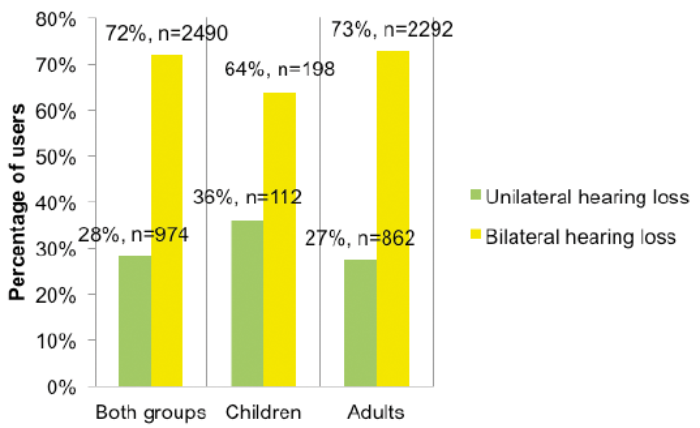
Figure 1. Number (%) of BCHI users with unilateral and bilateral hearing loss
for children and adults, and both groups, (children and adults).
Table 1 shows the causes of hearing loss and the numbers (%) in both groups, children and adults. The most common cause of hearing loss for children is syndrome with associated hearing loss, and for adults it is Chronic Suppurative Otitis Media (CSOM).
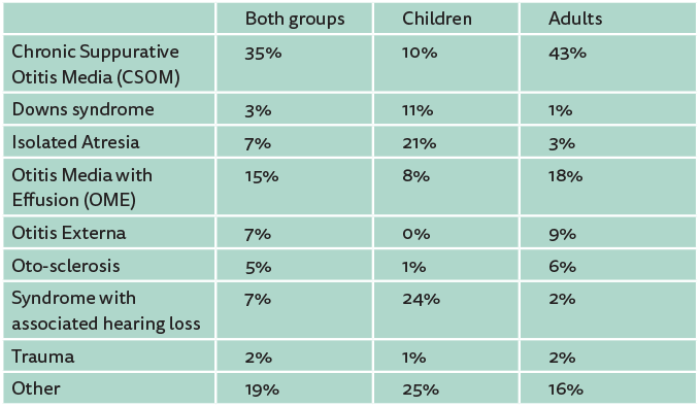
Table 1. Aetiology of both groups (children and adults).
With regards to the BCHI users with bilateral hearing loss, clinicians have reported (n=1724) 10% (n=166) are children and 90% (n=1558) adults fitted with a BCHI. Figure 2 illustrates the current amount of usage of their BCHI.
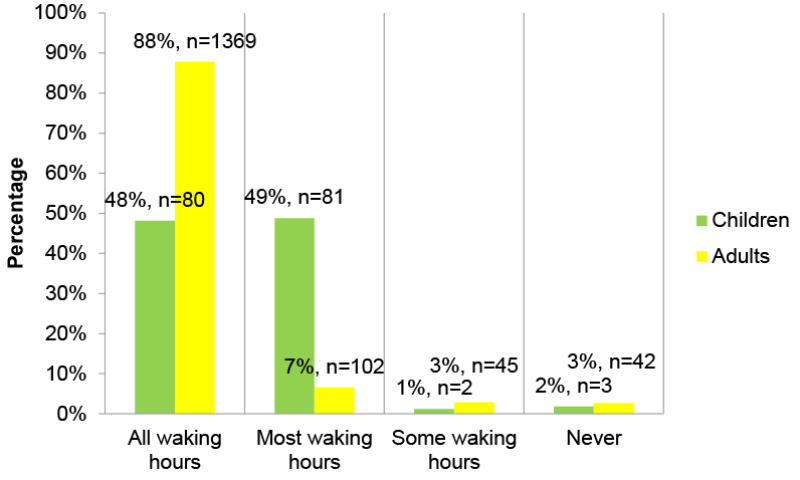
Figure 2. Current amount of usage of BCHI by those with bilateral hearing loss (n=1724).
With regard to the BCHI users with unilateral hearing loss, clinicians have reported (n=542), 16% (n=87) are children and 84% (n=455) adults fitted with a BCHI. Figure 3 illustrates the current amount of usage of their BCHI.
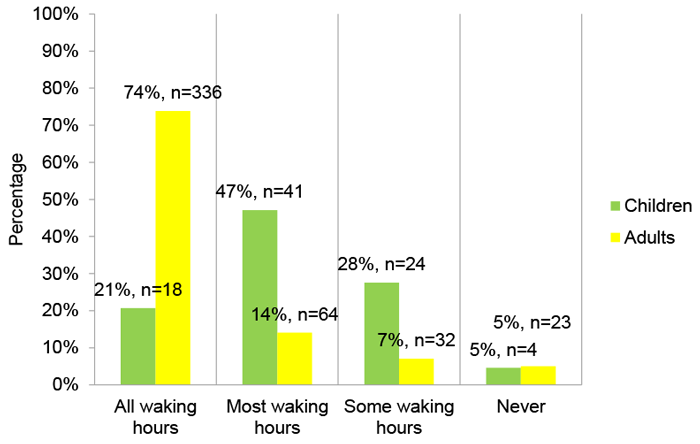
Figure 3. Current amount of usage of BCHI by those with unilateral hearing loss (n=542).
Quarterly results in the form of an infographic and presentation slides are posted on The Ear Foundation website: http://www.earfoundation.org.uk/hearing-technologies/bone-conducting-hearing-implants/national-bone-conducting-hearing-implant-registry.
How can other centres join?
Centres can freely join by requesting a BCHI package from The Ear Foundation which includes software, an e-guide and usable charts. They will have the possibility to demonstrate their own data on the charts, and are asked to send in their data quarterly to The Ear Foundation to be included in the national dataset. It takes only a few minutes to input data for a patient, and once a patient’s information is entered, the software will retain all details and present them back to the professional on the next occasion that the patient’s details are opened. In doing so, further entries children and adults require less work.
“The information obtained by the registry is vital to provide evidence which can be used for clinical cost-effectiveness and to secure the future funding of bone conducting hearing implants around the country.”
All patient data sent from the centres to The Ear Foundation will be received anonymously, and the data is safely stored. In addition, professionals from centres are invited to a biannual meeting, which is held with professionals from the different centres, manufacturer representatives and The Ear Foundation BCHI Registry team. In these meetings, the latest figures are presented, discussions are held around the registry, and appropriate tasks are set for the time period between each meeting. To request for a BCHI package, please contact: zheng@earfoundation.org.uk.
What are your future plans for this registry?
Next to those who have gone through the BCHI procedures and have been implanted, we are starting to collect data on patients who are not proceeding with a BCHI, and we are investigating what reasons there might be for this. In addition, continuous work will be done to be able to raise awareness of BCHI, the registry and to be able to expand the number of centres participating, to gain a clearer national picture of BCHI users.
We are also aiming for the registry to be used outside the UK to capture international figures and thereby be able to support BCHI users and practice abroad; we have already received interest from centres in other countries to be involved with the registry. The results of the registry are intended to be presented further through meetings and publications.
Are there any useful resources that you would like to mention?
- There is a Facebook users’ group available for BCHI users to ask questions and advice, and discuss topics relating to BCHI with peers, and coordinated by BCHI users and professionals. Professionals are asked and able to refer them to the online group, which is available at: www.facebook.com/groups/BAHA.UK/. This group is co-supported by The Ear Foundation.
- There are accessories and technology available to help BCHI users make the most of their device. These are available through various BCHI manufacturers, and also at: www.earfoundation.org.uk/hearing-technologies/bone-conducting-hearing-implants/bone-conducting-hearing-implant-accessories. Furthermore, The Ear Foundation also holds technical sessions on FM and wireless systems, accessible for BCHI users.
- With regard to more information on BCHI, there are several free information booklets on BCHIs available from The Ear Foundation and partners, including information on both children and adults, which can be used by BCHI users and professionals. The Ear Foundation also organises a BCHI users’ information day for (potential) users to learn more about the BCHI pathway and outcomes, with expertise from relevant professionals. In addition, there is research evidence available based on research projects conducted at The Ear Foundation, available at: www.earfoundation.org.uk/research/recent.
ACKNOWLEDGEMENT
The BCHI Registry is supported by Cochlear Europe Ltd and Oticon Medical. This registry is held together with Imran Mulla, Sue Archbold, Arti Patel and Rachel Lightfoot, and with advice from Marion Atkin. We would like to thank the participating centres listed above, and the professionals involved for all their continuous input, advice and support. The Ear Foundation is very grateful to be able to host the BCHI Registry.
Declaration of Competing Interests: The Ear Foundation has received support for research from Oticon Medical and Cochlear Europe Ltd.


